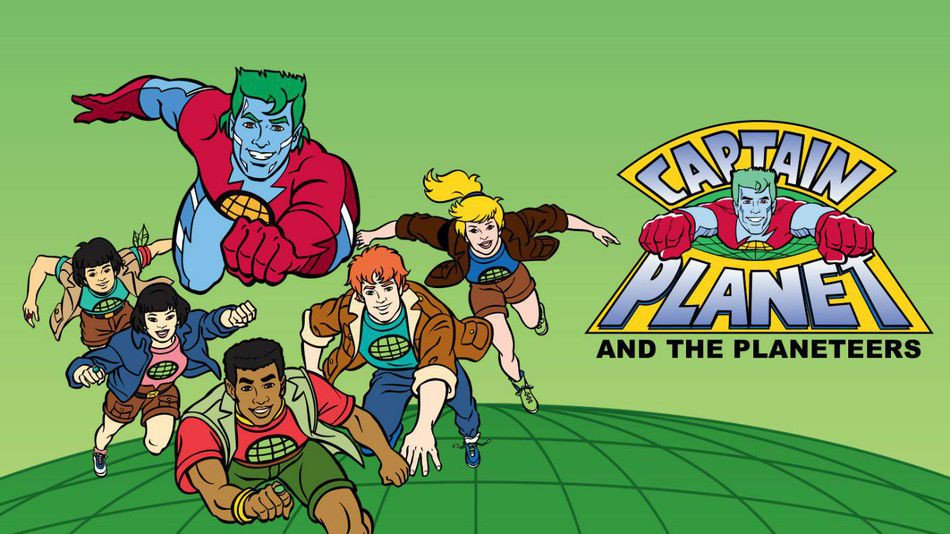
Captain Planet and the Planeteers. Turner Home Entertainment
Atlanta’s weather this winter has been a wild ride. Imagine needing a winter coat in the morning and switching to short sleeves by the afternoon! This isn’t just a recent phenomenon. Last summer was equally extreme, reflecting global trends. According to the U.S. Global Change Research Program, the city has seen a significant rise in extreme heat days, with about eight more per year compared to 1961. Research also indicates a noticeable shift in the city’s climate profile. Average summer temperatures have climbed 3.3% compared to the past, with 2022 averaging 80.7°F (27.1°C) compared to 77.4°F (25.2°C) in 1970.
This map, refined from NASA’s highest-quality visualizations, shows pronounced surface air temperature changes, particularly in northern latitudes and over land, with data smoothing to account for climate variability like El Niño. NASA, Eric Fisk, Wikimedia Commons
Atlanta’s fluctuating temperatures can be attributed to the broader effects of climate change, which increases weather variability, leading to unusual patterns such as warm afternoons following chilly mornings. This inconsistency makes daily life unpredictable and underscores the broader environmental shifts affecting our planet. While groups in the city are actively engaging in initiatives such as UrbanHeatATL, and the city is focusing on sustainable energy solutions such as solar power, climate scientists warn that immediate action is needed to avoid planet-altering tipping points. These tipping points are critical thresholds in the Earth’s system, where beyond, changes become irreversible, leading to drastic impacts on ecosystems, sea levels, and global weather patterns. The loss of polar ice caps or the deforestation of the Amazon could trigger such irreversible changes.
Another example of a tipping point is the melting of the Arctic sea ice, which threatens the habitat of polar bears and other species and accelerates global warming by reducing the amount of sunlight reflected into space. This creates a feedback loop that exacerbates climate change further, demonstrating the interconnectedness of Earth’s systems and the urgent need for concerted global action.
Given this urgency, what’s our solution? We need a hero and not just any hero. Perhaps it’s time to recall a figure from the late 20th century—Captain Planet—a hero who embodies the spirit of environmental action and unity.
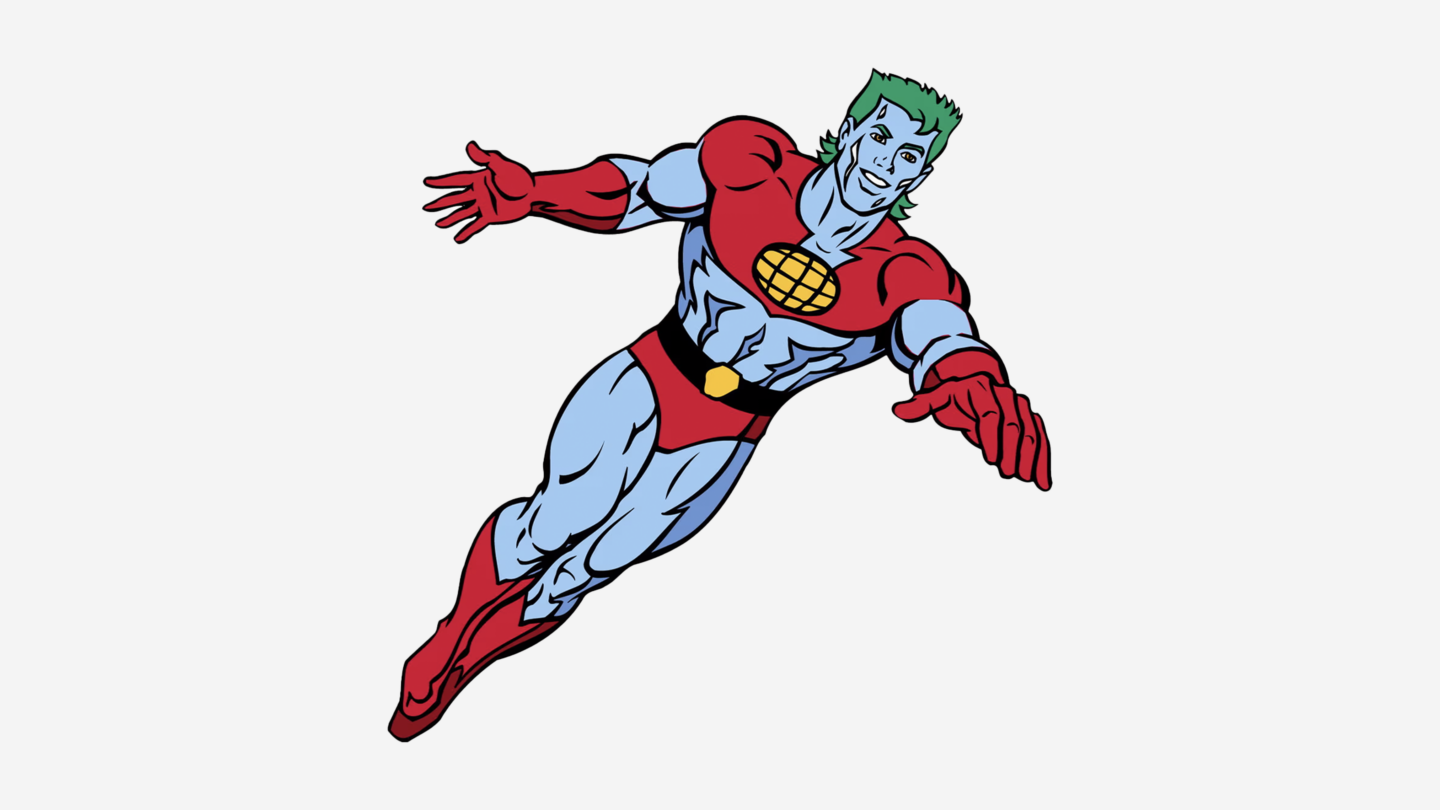
Captain Planet. Hanna-Barbera
Captain Planet and the Gang
Well-muscled and chiseled, Captain Planet (voiced by David Coburn) is literally the Earth’s superhero. His body, made from natural elements, reflects his deep connection to the Earth. His skin, a unique shade of blue, represents the planet’s oceans and sky, while his green mullet and Earth-themed suit emphasize his role as the protector of the environment.
He was the animated star of the eponymous animated series, “Captain Planet and the Planeteers.” His mission was to protect the Earth and promote sustainability. And in contrast to solitary, omnipotent superheroes, Captain Planet championed the notion that individual and collective actions can make a significant difference in environmental conservation.
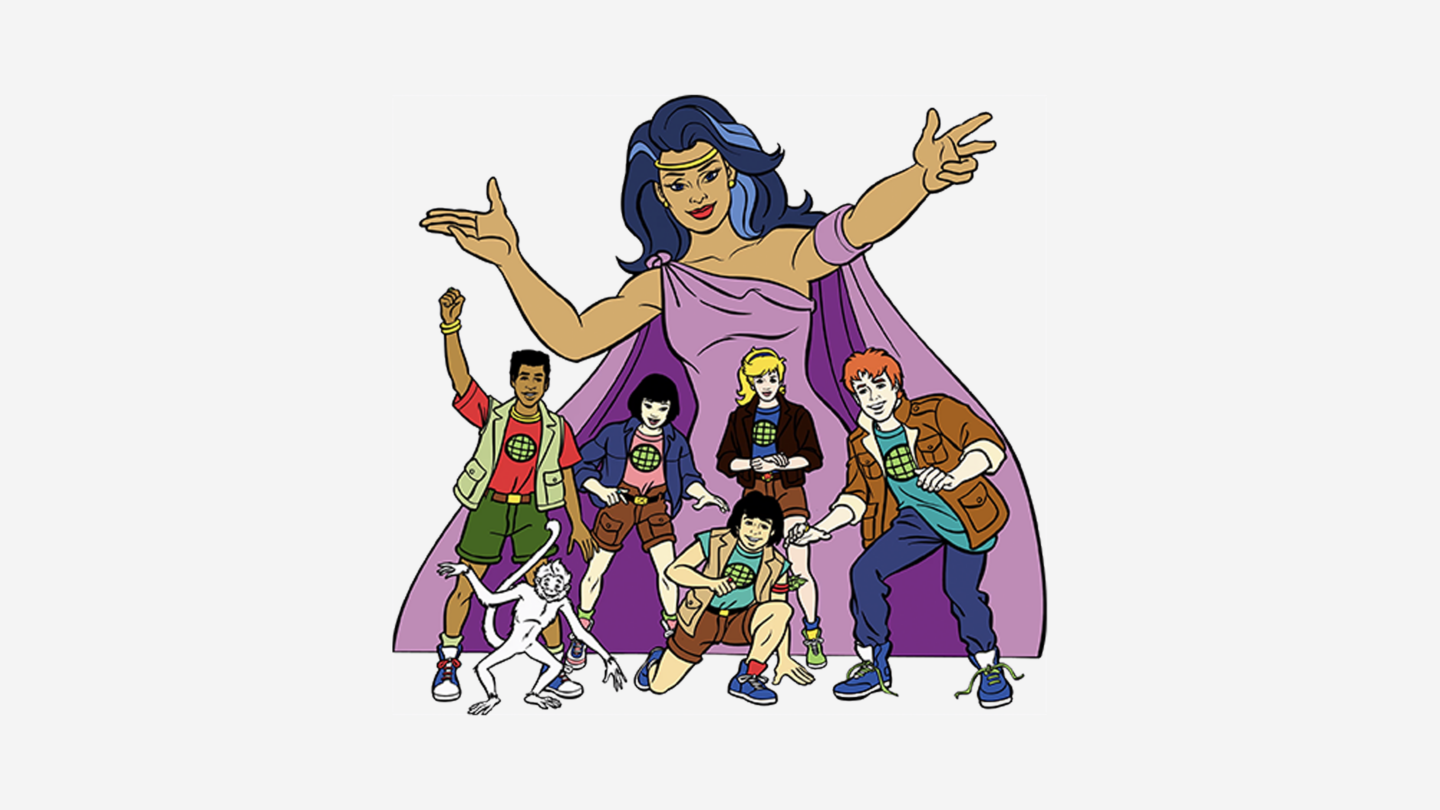
The Planeteers. Hanna-Barbera
Fighting alongside Captain Planet was a unique ensemble of teenagers from around the globe. Each teen possessed a ring that gave him or her control over one of the elements. Kwame (voiced by LeVar Burton), from Africa, wielded the power of Earth; Wheeler (voiced by Joey Dedio), from North America, controlled fire; Linka (voiced by Kath Soucie), from the Soviet Union (and later Eastern Europe), commanded the wind; Gi (voiced by Janice Kawaye), from Asia, could harness water; and Ma-Ti (voiced by Scott Menville), from South America, had the power of heart. When the Planeteers combined their powers, they could summon Captain Planet.
Other characters rounding out the side of the Planeteers were Gaia (voiced by Whoopi Goldberg), the spirit of the Earth, and Suchi (voiced by Frank Welker), Ma-Ti’s pet spider monkey.
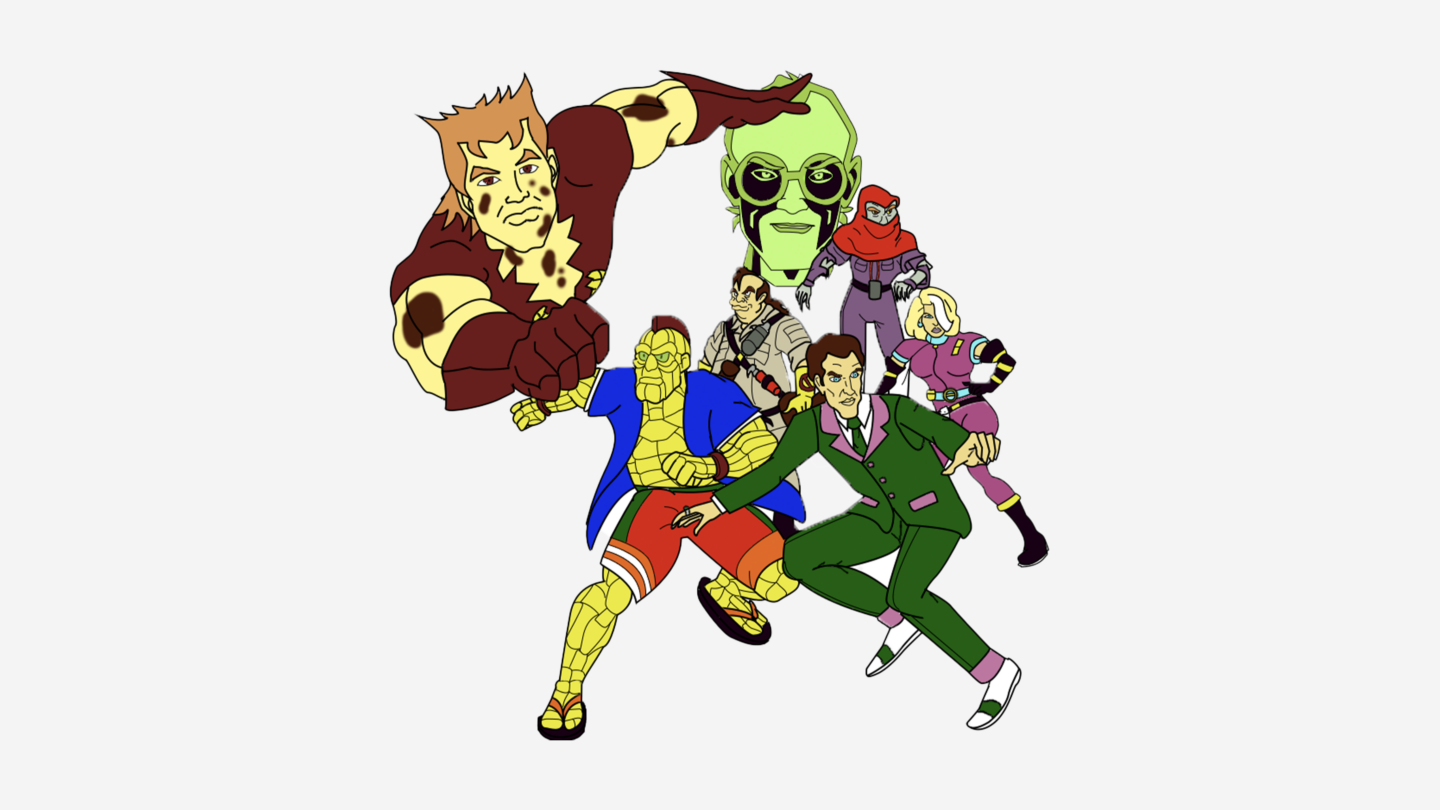
Some of the eco-villains in “Captain Planet and the Planeteers.” Saturn’s Revolution, Deviant Art
The Bad Guys
One of the show’s most memorable aspects was its zany eco-villain ensemble. Each embodied specific environmental threats, making them walking, talking cautionary tales about mistreating our planet. Characters such as Hoggish Greedly (voiced by Ed Asner) epitomized greed, demonstrating how it fuels environmental destruction for profit, while Dr. (Barbara) Blight (voiced by Meg Ryan from 1990 to 1991 and Mary Kay Bergman from 1992 to 1996) represented the perils of unchecked scientific endeavors. Looten Plunder (voiced by James Coburn in seasons one to three and Ed Gilbert in seasons four to six) was a symbol of the consequences of unsustainable resource exploitation, and Duke Nukem highlighted the dangers associated with nuclear energy and radiation. Verminous Skumm (voiced by Jeff Goldblum in season one, Maurice LaMarche in seasons two to five) and Sly Sludge (voiced by Martin Sheen in seasons one to three and Jim Cummings in seasons four and five) brought to life the issues of urban pollution and waste mismanagement, respectively.
Other villains in the series included Zarm, a former spirit of the planet (voiced by Sting, David Warner, and Malcolm McDowell in various seasons) who represents war and destruction. Captain Pollution (voiced by David Coburn), a polluting counterpart to Captain Planet, appeared in the series to embody the antithesis of environmental protection. Additionally, the Slaughters, a family of poachers featuring Mame Slaughter (voiced by Theresa Saldana and Mitzi McCall), and Stalker Slaughter (voiced by Charlie Adler), represented the dangers of poaching and animal endangerment.
These exaggerated, cartoonish villains were designed to resonate with a younger audience, helping them grasp the serious implications of environmental neglect. Through their conflicts with Captain Planet and the Planeteers, the show illustrated fictional battles and real-world environmental challenges, emphasizing the importance of collective responsibility and action in safeguarding the Earth.
Barbara Pyle, one of the creators of the show, said she chose to make the villains buffoonish to avoid casting relatives as villains in children’s eyes.
“That’s one of the reasons we made the bad guys and their plans so ridiculous,” she said in an interview with Grist.
“We tried to point the finger at behaviors rather than industries. That way, no child would go home and say, ‘Oh, daddy, you’re in a blah blah business.’ It would be horrible for some child to see their family member as a Captain Planet villain.”
Ted Turner poses for a photo with Captain Planet at the “Captain Planet Goes Green NYC” reception on April 24, 2008, in New York City. Joe Kohen, WireImage
Origins
“Captain Planet and the Planeteers” was created to entertain young viewers while educating them about environmental concepts, encouraging them to become active in planet protection. The concept for the show’s titular character, Captain Planet, originated from a challenge by eco-conscious magnate Ted Turner to Pyle.
Turner tasked Pyle, who was also a producer on the show, with creating a character that could bring global issues to life in an engaging way. When Pyle sought clarity on the character’s identity, Turner’s response was straightforward: “That’s your problem.”
Captain Planet Foundation co-founder Barbara Pyle attends the foundation’s annual benefit gala at the Georgia Aquarium on December 9, 2011. Ben Rose, WireImage
Rising to the challenge, Pyle and her team crafted a series resonating with children and adults. Pyle aimed to create a cross-generational show, targeting not just those born around 1985 but also their guardians, hoping the environmental messages would resonate with viewers of all ages.
“I wanted to make a show that was cross-generational,” Pyle said. “But I was hoping parents or grandparents watching alongside kids would pick up on the message too.”
The Planeteers, too, were inspired by real-life environmental activists from the 1980s and 1990s who embodied the spirit of ecological guardianship and activism.
The show debuted on September 15, 1990, and was produced by Turner Program Services and DIC Entertainment, an animation studio. DIC was known for its prolific output of children’s programming, particularly during the 1980s and 1990s, including classics such as “Inspector Gadget,” “The Real Ghostbusters,” and “Liberty Kids.”
“Captain Planet and the Planeteers” quickly became one of the 1990s’ longest-running cartoon series, spanning six seasons and 113 episodes. Syndicated in more than 100 countries and used in various educational settings to teach children about environmental issues, the series sparked a wave of environmental activism worldwide. After its impactful run, the show concluded on May 11, 1996.
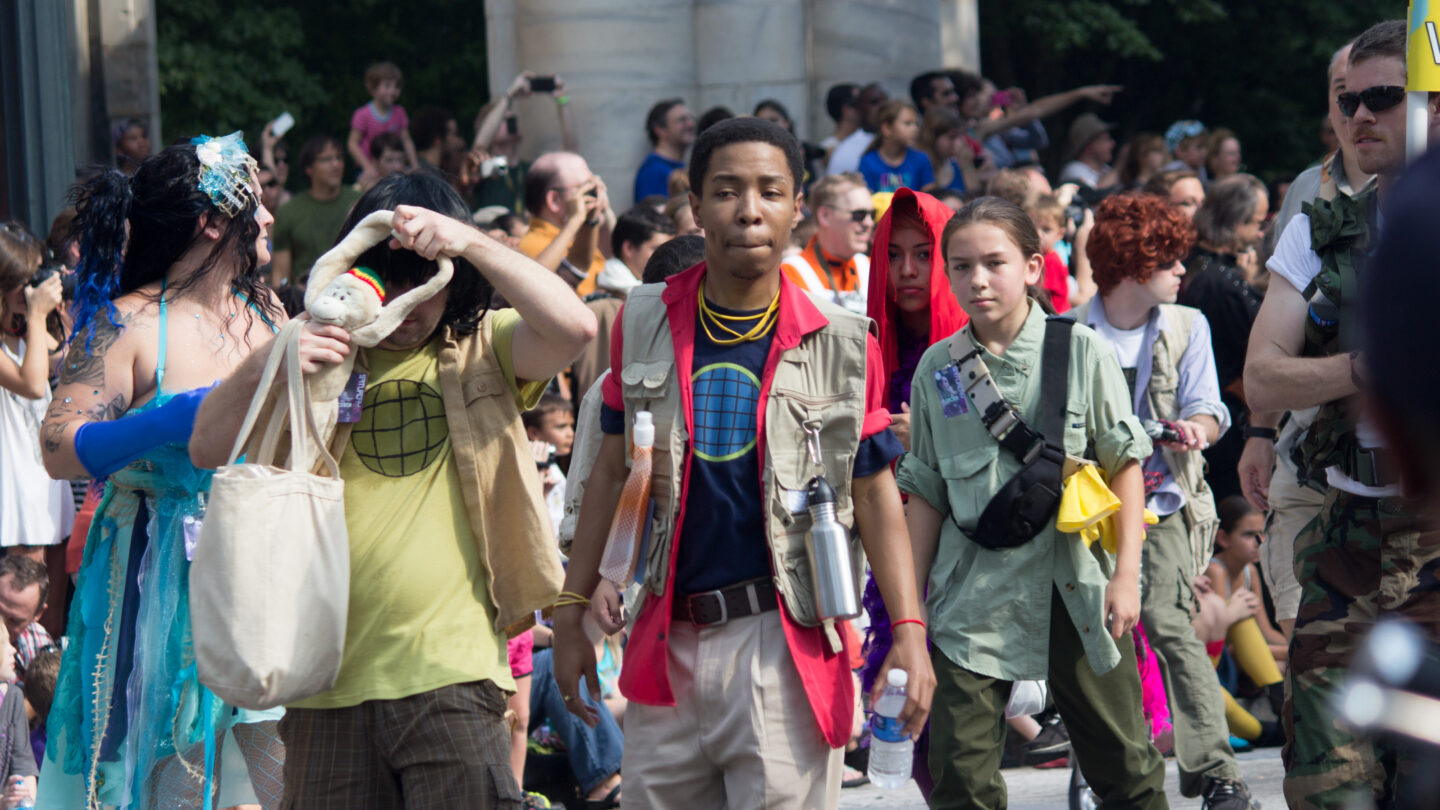
Fans in Planeteer costumes participate in the 2013 Dragon Con parade in downtown Atlanta on August 31, 2013. Pat Loika, Wikimedia Commons
“Captain Planet, he’s our hero, gonna take pollution down to zero!” This theme song resonated with a generation, making “Captain Planet and the Planeteers” a defining piece of environmental pop culture. Beyond the small screen, the show’s message was spread through action figures, comic books, and video games emphasizing ecology.
The series’ influence persisted post-broadcast, notably with the 1991 founding of the Captain Planet Foundation. This organization empowers young environmentalists with the tools and resources to engage in environmental stewardship, continuing the show’s mission in real-world applications.
Decades later, the enduring appeal of “Captain Planet and the Planeteers” has also inspired numerous parodies and homages, reflecting its deep cultural impact. While often humorous, these parodies underscore the show’s iconic status and keep the conversation around it alive in popular culture.
In today’s context of environmental urgency, Captain Planet’s message is strikingly relevant. The collaborative spirit and proactive stance the show championed are crucial as we tackle present-day environmental challenges. Reflecting on the series, we see more than entertainment; we find a powerful call to action embodied in Captain Planet’s rallying cry: “The power is yours!”


